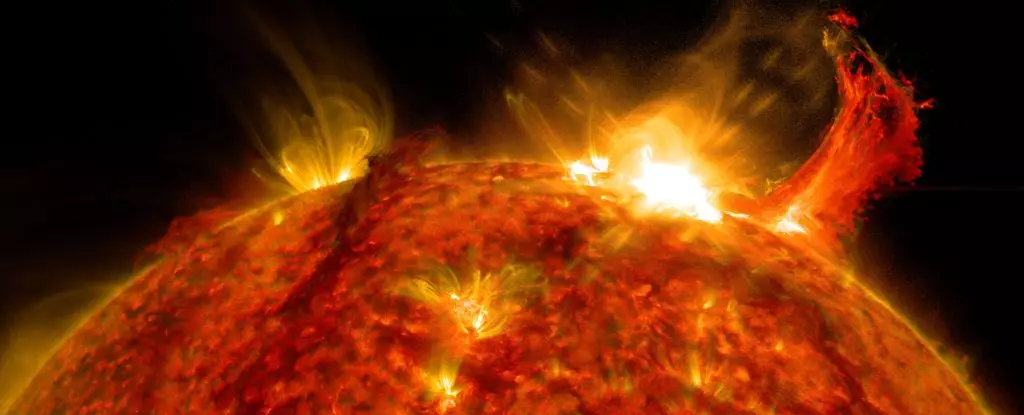Around 14,300 years ago, Earth experienced a colossal cosmic event that would leave an indelible mark on our planet’s geological and archaeological record. Modern science has unveiled evidence of a significant solar phenomenon that occurred circa 12350 BCE, reshaping our understanding of solar activity’s historical impact on Earth. By analyzing anthropogenic materials from ancient trees and ice cores, researchers have pieced together the fragments of a story that not only illuminates our past but has profound implications for our future.
Recent innovations harnessing sophisticated climate-chemistry models, particularly the SOCOL:14C-Ex model, have offered unprecedented insights. This research indicates that a gigantic solar event bombarded Earth with high-energy particles, rivaling any known storm in recorded human history. Space physicist Kseniia Golubenko of the University of Oulu emphasizes the magnitude of this ancient solar storm, estimating it to be over 500 times more intense than the most substantial storm documented in recent history, such as the notorious 2005 event.
The Mechanisms Behind Solar Storms
The dynamic interplay between solar activity and terrestrial impacts is intricate and often perplexing. A geomagnetic storm, typically triggered by coronal mass ejections (CMEs)—vast expulsions of plasma and magnetic fields from the Sun—can lead to dramatic consequences for our planet. When these particles collide with Earth’s magnetosphere, they create stunning visual phenomena like the auroras, yet the storm’s repercussions extend far beyond mere visual spectacles. The historical Carrington Event of 1859 stands as a prime example, causing widespread disruption to telegraph systems and igniting fires across the globe.
As our reliance on technology intensifies, the threat from geomagnetic storms grows more significant. The 1989 solar storm that resulted in massive electrical grid failures highlighted the vulnerability of our infrastructure to such cosmic disturbances. While numerous documented solar storms exist, many remain obscure due to inadequate historical records, exemplifying the importance of ongoing scientific inquiry into past events to better prepare for future occurrences.
Carbon-14 as a Time Capsule
One of the most astonishing breakthroughs in this field has been the use of carbon-14—a radioactive isotope produced when cosmic particles from events like solar storms interact with atmospheric molecules—as an archaeological and environmental time capsule. By examining tree rings and fossilized remains, scientists can detect spikes in carbon-14 levels that correspond to significant geomagnetic events.
This technique is transformative; it allows researchers to pinpoint the dates of extreme solar activity with remarkable accuracy, revealing not just the presence of these events but their broader implications for climatic and ecological changes. For instance, the analysis conducted by Golubenko’s team on ancient tree rings illuminated the scale of the 12350 BCE storm, establishing it as an unparalleled solar particle assault long before the current Holocene epoch.
Transformative Modeling and Future Implications
The endeavor to construct the SOCOL:14C-Ex model signifies a pivotal advancement in our scientific capability to analyze radiocarbon data, especially in periods of climatic fluctuation such as glacial epochs. By applying this model to both ancient and historically known geomagnetic events, researchers are harnessing a new lens through which to evaluate the power of solar storms—not only retroactively but also in predictive contexts.
Golubenko articulates the significance of these findings aptly: the 12350 BCE solar storm serves as a newfound worst-case scenario. This statement underscores the urgency for further study and preparation as human society navigates the complexities of our technological dependencies in an era increasingly characterized by powerful solar activity.
Through this intensive investigation into ancient cosmic events, we find ourselves not only mapping the contours of our planet’s history but also laying the groundwork for future resilience against the unpredictable forces of our solar system. Understanding our past is critical not just for historical knowledge but for safeguarding our collective future from celestial repercussions, underscoring the interconnectedness of humanity, technology, and the cosmos.


Leave a Reply